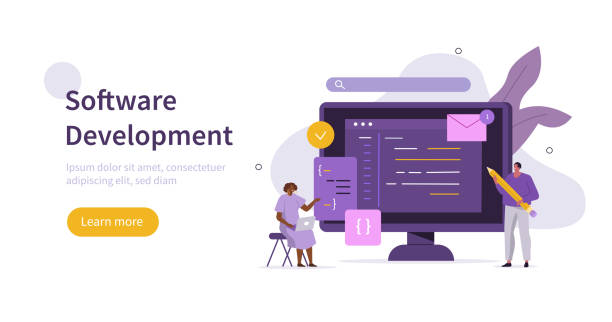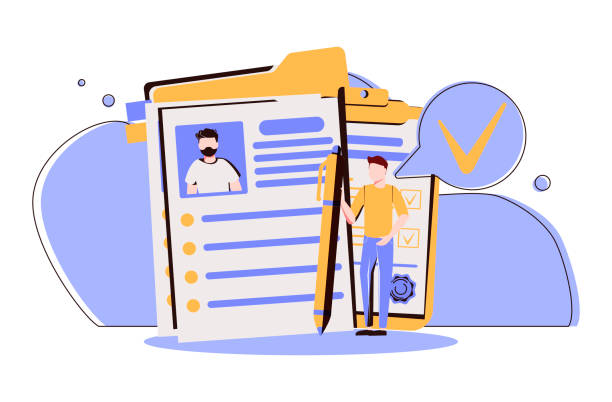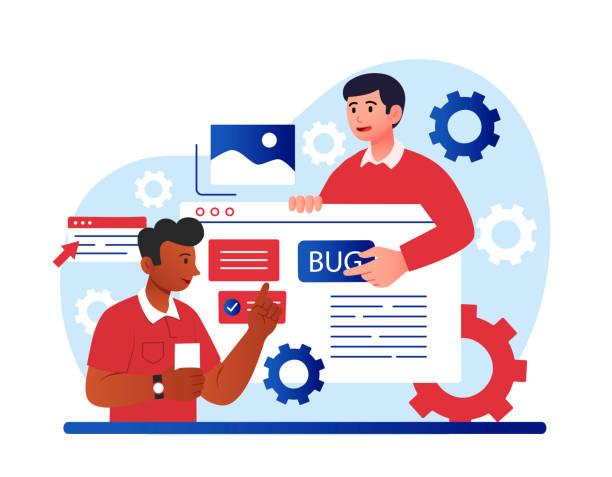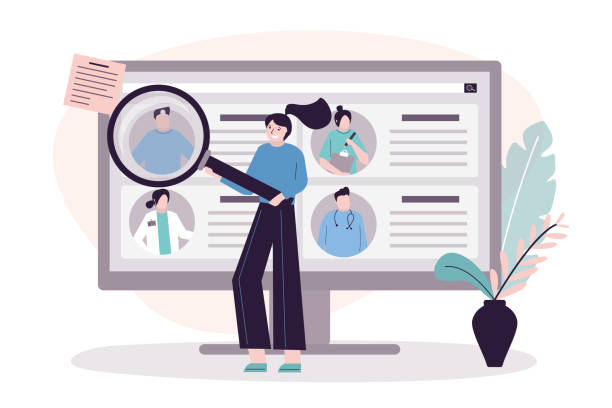The Importance of Secure Website Design in Today’s Digital World

In the current era, where our daily lives are deeply intertwined with the virtual world, website design is no longer just about having an online presence.
Instead, it is increasingly linked to the critical topic of cybersecurity.
#Secure website design is no longer considered a luxury, but an undeniable necessity for any business or individual intending to manage sensitive information or conduct online interactions.
This topic encompasses an important #educational dimension, as many users and even developers lack sufficient awareness of the potential dangers that threaten websites.
An insecure website can quickly become a platform for malware attacks, phishing, user data theft, and even loss of business credibility.
#Questionable content often uses insecure websites for its dissemination, which doubles the importance of prevention.
The main goal of secure website design is to protect data from unauthorized access, unwanted changes, or destruction.
This concept includes a set of measures and protocols that protect various layers of a website, including the server, database, source code, and even user-server communications.
This comprehensive approach not only protects information but also provides assurance to users.
As a general #guidance, every website should be designed from the outset with security in mind, rather than security being added as an afterthought.
This proactive approach significantly reduces potential costs resulting from security breaches and greatly contributes to the long-term stability and success of the online project.
OWASP Top 10 is an excellent #technical resource for understanding the most common web vulnerabilities that every secure website designer should be familiar with.
Awareness of these vulnerabilities is the first step towards creating a #secure website design that is resistant to cyberattacks.
Does your current corporate website not reflect your brand’s credibility and power as it should? Rasaweb solves this challenge for you with professional corporate website design.
✅ Increase credibility and visitor trust
✅ Attract more targeted customers
⚡ Click to receive free consultation!
Understanding the Most Common Web Vulnerabilities

To achieve a secure website design, we must first get to know the enemy.
Familiarity with common web vulnerabilities is the first and most crucial step in creating a resilient website.
The OWASP (Open Web Application Security Project) organization continuously publishes a list of the top ten web vulnerabilities, known as the OWASP Top 10.
This list is a technical and vital resource for every web developer and security expert.
Among these vulnerabilities is Injection, where attackers inject malicious code into the system through user inputs, such as SQL Injection.
Another significant vulnerability is broken authentication and session management.
This weakness allows attackers to impersonate legitimate users or take control of active sessions.
Also, Cross-Site Scripting (XSS), which allows an attacker to send malicious scripts to other users’ browsers, is very common.
Addressing these details is part of a comprehensive explanatory discussion about web threats.
Website security also requires attention to analytical aspects, such as a thorough review of security misconfigurations that often occur due to negligence or lack of sufficient knowledge.
These configurations can include improper file permissions, insecure default service configurations, or configuration errors in web servers.
Failure to observe these points renders efforts for secure website design ineffective.
Denial of Service (DoS) attacks and DDoS attacks are also serious threats that can disrupt user access to the website.
Sensitive information stored without encryption or improperly is a primary target for data theft.
Understanding these vulnerabilities is the cornerstone of any effective educational program in secure website design.
Implementing Secure Coding Principles and Best Practices

The beating heart of any website is its code.
Therefore, implementing secure coding principles is one of the most important pillars of secure website design.
This approach includes a set of methods and techniques aimed at reducing vulnerabilities at the code level.
The first step is input validation.
Any data received from the user must be validated and filtered before being used in any part of the system to prevent attacks such as SQL Injection or XSS.
This is a fundamental guideline for all developers.
Second, using Prepared Statements for database interaction.
This technique effectively prevents SQL injection attacks by separating user input from the SQL command.
Third, proper error and log management.
Generic error messages should be displayed to the user to prevent the disclosure of sensitive system information to attackers.
Detailed logging of system activities is also essential for tracing and identifying attacks.
This part of the design is specialized and requires deep knowledge.
Fourth, proper encryption of sensitive data, especially user passwords.
Never store passwords in plain text.
Strong hashing algorithms such as bcrypt or Argon2 should be used.
These measures ensure a secure and reliable website.
Questionable content may be found on websites that do not adhere to secure coding principles.
Also, session and token management must be performed with great care.
Session tokens should be random, unpredictable, and have a limited lifespan to prevent Session Hijacking attacks.
Finally, regular updates of libraries and frameworks used are vital.
Many vulnerabilities enter the system through old and vulnerable software.
Adhering to these principles is a big step towards secure website design and reducing security risks.
Below is a table of secure coding best practices.
| Topic | Description | Example/Tip |
|---|---|---|
| Input Validation | Review and sanitize all user inputs before processing. | Filtering special characters, using Regular Expressions. |
| Prepared Statements | Separating SQL commands from input data to prevent SQL Injection. | Using PDO in PHP or psycopg2 in Python. |
| Data Encryption | Hashing passwords and encrypting sensitive information in the database. | Using bcrypt for passwords, HTTPS for communications. |
| Session Management | Creating random session tokens, scheduling expiry, and invalidating sessions after inactivity. | Using HttpOnly and Secure cookies. |
Database Security and Protection of Sensitive Information

The database is the treasure trove of information for any website.
Protecting this information is one of the main pillars of secure and resilient website design.
Database breaches can lead to the theft of customer information, financial data, and even personal identities, with irreparable consequences.
One of the fundamental measures is applying the Principle of Least Privilege.
This means that every user or application should only be granted the minimum necessary access to perform their tasks in the database.
This is a crucial guideline for database administrators.
For example, the website should not connect to the database with full administrator (root) access.
Also, encrypting data at rest and in transit is essential.
Sensitive data such as credit card numbers or personally identifiable information should be stored encrypted in the database.
Using secure protocols like SSL/TLS for communication between the web server and the database also prevents eavesdropping on data in transit.
Secure configuration of the database server is also very important.
All unnecessary ports should be closed, and the firewall should be properly configured so that only authorized traffic reaches the database.
Be wary of questionable content that might penetrate your database through SQL Injection attacks.
These measures are specialized and require deep knowledge in database security.
Continuous monitoring of database logs to identify suspicious activities should also not be forgotten.
An analytical approach to logs can reveal early signs of attacks.
Regular and secure backups of the database are also of high importance.
In the event of a disaster or cyberattack, recovering information through up-to-date and secure backups can prevent irreparable losses.
This part of database security complements efforts for designing a secure website, and without it, no website can claim complete security.
Tired of losing business opportunities due to not having a professional corporate website?
Don’t worry anymore! With Rasaweb’s corporate website design services:
✅ Your brand’s credibility and professionalism will increase.
✅ You will attract more customers and sales leads.
⚡ Get a free consultation from Rasaweb now to get started!
Securing Servers and Infrastructure

Website security is not limited to coding and databases.
The server and infrastructure on which the website is hosted form a vital layer of information security, which is crucial in secure website design.
The first step is regularly updating the operating system and server software.
Many cyberattacks occur through known vulnerabilities in outdated software.
Security patches should be installed immediately upon release.
Second, proper firewall configuration.
Firewalls should be set to allow only essential traffic and block the rest.
This includes closing unnecessary ports and restricting access to sensitive services.
This is important instruction for system administrators.
Third, using secure protocols for remote access, such as SSH with private keys instead of passwords.
Disabling root access via SSH is also an essential security measure.
Fourth, monitoring system logs and suspicious activities.
Monitoring tools can detect anomalies and intrusion attempts and issue alerts.
This analytical approach helps you identify threats in the early stages.
Fifth, environment isolation.
If multiple websites are hosted on one server, each should be placed in its separate environment to prevent a breach in one from leading to vulnerability in another.
This is a specialized aspect of server security.
Also, using a Content Delivery Network (CDN) not only increases website speed but also contributes to secure website design by distributing traffic and protecting against DDoS attacks.
SSL/TLS certificates for encrypting communications between the user and the server are also highly important and must be configured correctly.
Overall, a comprehensive approach to server and infrastructure security provides a strong layer of protection for your website and prevents attackers from penetrating core infrastructure.
This will significantly contribute to the stability and user trust in your website.
Client-Side Security and Protection Against Browser Attacks

Website design is not limited to server and database layers;
Client-Side Security is equally vital.
This section focuses on protecting the user from attacks targeting the web browser.
One of the most common of these attacks is Cross-Site Scripting (XSS).
In XSS attacks, the attacker injects malicious code into the website that runs in other users’ browsers, which can lead to the theft of cookies, session information, or alteration of the website’s appearance.
To prevent XSS, thorough validation and sanitization of all user inputs before display on the web page is essential.
This is a key explanation for understanding how XSS works.
Another attack is Cross-Site Request Forgery (CSRF), where an attacker tricks a user into submitting unintended requests to a legitimate website.
Using anti-CSRF tokens in forms and validating the referrer can help protect against these attacks.
Content Security Policy (CSP) is a powerful security mechanism that allows developers to specify which resources (such as scripts, stylesheets, images) can be loaded by the browser.
This effectively prevents XSS and code injection attacks and greatly contributes to secure website design.
Also, using HTTP Strict Transport Security (HSTS), which forces browsers to always use HTTPS for communication with the website, is very important.
This action prevents Man-in-the-Middle attacks that attempt to downgrade secure communication to HTTP.
Educating users is also part of this process.
Providing guidance to users on how to identify suspicious links or phishing websites complements technical measures.
Given these complexities, understanding and correctly implementing these measures is vital for anyone who cares about client-side security.
Security Testing and Periodic Audits

Security testing is one of the critical stages in the software development life cycle to ensure secure website design.
Simply building a website according to security principles is not enough;
It must be continuously tested and audited to identify and fix new vulnerabilities.
Questionable content might exploit security holes created by inadequate testing.
There are various types of security tests, each with its specific purpose.
Vulnerability Scanning involves using automated tools to identify known vulnerabilities in code, network, or infrastructure.
These tools can quickly check thousands of potential weaknesses.
Penetration Testing, also known as Pentest, simulates a real attack by security specialists (ethical hackers) to discover vulnerabilities that automated tools might miss.
This is a specialized and in-depth approach that requires high skill and experience.
Code Auditing involves manual or automated review of the source code to find security flaws and improper implementations.
This method can uncover logical flaws not identified by other tests.
These audits are part of an analytical approach to security.
Security tests should be conducted periodically and after every significant change in code or infrastructure.
This continuous approach ensures that your website is always protected against new threats.
Below is a table of various security tests and their applications.
| Test Type | Objective | Method |
|---|---|---|
| Vulnerability Scanning | Rapid identification of known vulnerabilities. | Automated tools, comprehensive report. |
| Penetration Testing | Discovery of complex and logical vulnerabilities. | Simulated real-world attack by a specialist. |
| Code Auditing | Reviewing source code for security flaws. | Manual review or use of SAST/DAST tools. |
| API Security Testing | Ensuring the security of API endpoints. | Checking authentication, API input validation. |
Furthermore, news reports related to successful cyberattacks can be a good educational resource for learning from the mistakes of others.
Incident Response and Disaster Recovery

Even with the best secure website design approaches, no system is completely impenetrable.
A security breach or disaster, however unpleasant, is a real possibility.
Therefore, having an Incident Response and Disaster Recovery plan is vital for any organization that values its website’s security.
An incident response plan is a set of documented procedures that specify how an organization reacts to a security incident.
This plan includes stages of identification, containment, eradication, recovery, and lessons learned from the incident.
For example, an incident could involve the discovery of an SQL injection or a DDoS attack.
Each stage must be clearly defined, and responsibilities assigned.
This section is specialized and requires an experienced security team.
Also, communication during a crisis is crucial.
How to inform users, legal entities, and the media should be planned in advance.
This can address questionable content for the public and maintain trust.
The disaster recovery plan also focuses on restoring normal system functionality after a catastrophic event (such as server failure, data loss, or a major cyberattack).
This includes planning for regular and off-site data backups, testing the backup recovery process, and having alternative hardware or cloud resources.
The ultimate goal is to reduce downtime and minimize data loss.
Security news often indicates that companies without an incident response plan suffer significantly more financial and reputational damage.
Regularly practicing these plans through incident simulations helps teams operate more efficiently in real-world scenarios.
Having a comprehensive incident response and disaster recovery plan, as part of the overall website security strategy, assures you that even in the worst-case scenarios, you will be able to recover and continue operations.
This is essential guidance for maintaining the stability of your online business.
Are you worried about losing customers because you don’t have a professional e-commerce website?
Forget these worries with e-commerce website design by Rasaweb!
✅ Significant increase in sales and visitor-to-customer conversion rate
✅ Professional and user-friendly design that gains customer trust
⚡ Get a free consultation from Rasaweb
User Education and Security Culture Building

In the security chain, humans are often considered the weakest link.
No matter how secure your website design is, if users are unaware of basic security principles, the website will be at risk.
Therefore, user education and security awareness building are an integral part of a comprehensive web security strategy.
This is an educational approach focused on increasing awareness.
Users should be taught how to create strong and unique passwords and change them regularly.
The importance of using Two-Factor Authentication (2FA) should be clearly explained.
This action significantly enhances the security of user accounts.
Also, education on identifying phishing and social engineering attacks is critical.
Users must learn to recognize suspicious emails and messages and avoid clicking on unknown links or downloading unwanted files.
This topic can be engaging if presented with real-world examples and compelling stories.
Providing clear guidance and instructions on how to report suspicious activities or vulnerabilities is also important.
Encouraging users to use reputable antivirus software and keep their operating systems and browsers updated are other measures that can improve client-side security.
Creating a Frequently Asked Questions (FAQ) section on the website or publishing explanatory articles about security, can help users better understand these topics.
Website administrators must also stay continuously informed about the latest security news and new threats to be able to convey up-to-date information to users.
Ultimately, security culture building is a continuous process that requires constant repetition and reinforcement.
By creating an aware and responsible user community, you can significantly increase your website’s resilience against human attacks and get closer to the ultimate goal of secure website design.
Future Trends in Web Security and Preparation for Changes

The world of cybersecurity is constantly evolving.
New threats emerge, and defensive methods also evolve.
To maintain a secure website design in the long term, it is essential to be familiar with future trends in web security and prepare for changes.
One of the most important future trends is the broader use of Artificial Intelligence and Machine Learning in security.
These technologies can be very effective in identifying complex attack patterns, detecting anomalies, and even predicting new threats.
This analytical approach is rapidly growing.
Another trend is API (Application Programming Interfaces) security.
With the increasing use of Microservices and API-first architectures, protecting APIs has become a major security concern.
API endpoints can be gateways for intrusion if not properly secured.
Questionable content may exploit API weaknesses for infiltration.
Cloud computing security will also remain an important area.
As more businesses migrate to cloud platforms, ensuring secure configuration and data protection in cloud environments is an ongoing challenge.
The issue of data privacy and regulations like GDPR and CCPA will also become increasingly important.
Developers and website owners must be aware of these regulations and design their websites in a way that protects user privacy.
This requires a detailed explanatory approach in privacy documentation.
Finally, Quantum Security is also on the horizon.
With the advancement of quantum computers, current encryption methods may become vulnerable in the future.
Although this is a challenge for the more distant future, the security community is currently working on quantum-resistant encryption algorithms.
For maintaining website security, continuous learning and staying up-to-date with the latest security developments are essential.
Participating in educational courses, studying security news, and collaborating with specialized experts can help you always stay one step ahead of attackers and ensure that your site remains secure.
This approach allows you to provide an engaging yet completely secure experience for your users.
Frequently Asked Questions
| Question | Answer |
|---|---|
| 1. What does secure website design mean? | Secure website design means creating a website that is resistant to cyberattacks and protects user and server information. |
| 2. Why is security important in website design? | To prevent data breaches, maintain user privacy, preserve user trust, and avoid financial and reputational losses. |
| 3. What are the most common web vulnerabilities? | SQL Injection, Cross-Site Scripting (XSS), Cross-Site Request Forgery (CSRF), Broken Authentication, and Security Misconfiguration. |
| 4. How can SQL Injection be prevented? | By using Prepared Statements / Parameterized Queries, ORMs, and Input Validation. |
| 5. What is the role of HTTPS and SSL/TLS in website security? | HTTPS encrypts the communication between the user’s browser and the server using the SSL/TLS protocol, preventing data eavesdropping and tampering. |
| 6. What measures should be taken to prevent XSS attacks? | Input validation, Output Encoding to prevent malicious code execution, and using Content Security Policy (CSP). |
| 7. What does a strong password policy include? | Enforcing long passwords, a combination of uppercase and lowercase letters, numbers, and special characters, and preventing reuse. |
| 8. How does Two-Factor Authentication (2FA) help with security? | Even if a user’s password is compromised, the attacker cannot access the account without access to the second authentication factor (such as an SMS code or app). |
| 9. What is a Web Application Firewall (WAF) and what is its use? | A WAF is a firewall that monitors and filters HTTP traffic between a web application and the Internet to prevent common web attacks such as SQL Injection and XSS. |
| 10. Why is regular updating of software and libraries important? | Updates often include security patches to fix discovered vulnerabilities. Failure to update can expose the site to new attacks. |
And other services of Rasaweb Advertising Agency in the field of advertising
Smart Website Development: Designed for businesses seeking user engagement through custom programming.
Smart Marketplace: An effective tool for user interaction with the help of attractive UI design.
Smart Social Media: A novel service to enhance digital branding by using real data.
Smart Advertising Campaign: A combination of creativity and technology to increase website traffic through SEO-driven content strategy.
Smart Advertorial: A combination of creativity and technology to analyze customer behavior through user experience customization.
And over a hundred other services in the field of internet advertising, advertising consultation, and organizational solutions
Internet Advertising | Advertising Strategy | Advertorial
Sources
Website Security in Design (Rayach)
Website Security Checklist (Hamyar WP)
Website Security: Everything You Need to Know (IranHost)
The Importance of Website Security (Faraznet)
? Are you ready for your business to shine in the digital space? Rasaweb Afarin, by providing comprehensive digital marketing services including corporate website design, SEO, and social media management, paves the way for your success.
📍 Tehran, Mirdamad Street, next to Bank Markazi, Kazerun Jonubi Alley, Ramin Alley No. 6



